Joy Partridge • Savannah College of Art and Design
Recommended Citation: Joy Partridge, “Elements of Uncertainty: Visualizing the ‘Spheres’ of Water and Earth in the Late Middle Ages,” Different Visions: New Perspectives on Medieval Art 9 (2023). https://doi.org/10.61302/NAQJ5747.
The medieval cosmological system, and the ontological world it constructs, can seem oppressively rigid (Fig. 1).[1] Indeed, the medieval worldview is often criticized for its adherence to strict hierarchical systems and air-tight tautologies, which make it “a shade too ordered,” for modern audiences, as C.S. Lewis remarked.[2] However, a closer look at medieval cosmological images and the perspectives they represent reveals an abundance of ambiguity. The four elements, a concept foundational to medieval natural philosophy, is an exceptional case-study for investigating these issues; as a subject that lays the groundwork for so many medieval ideas of nature, the elements constitute an ideal place to begin looking for both the apparent stability and the intrinsic uncertainty of medieval cosmology.[3]
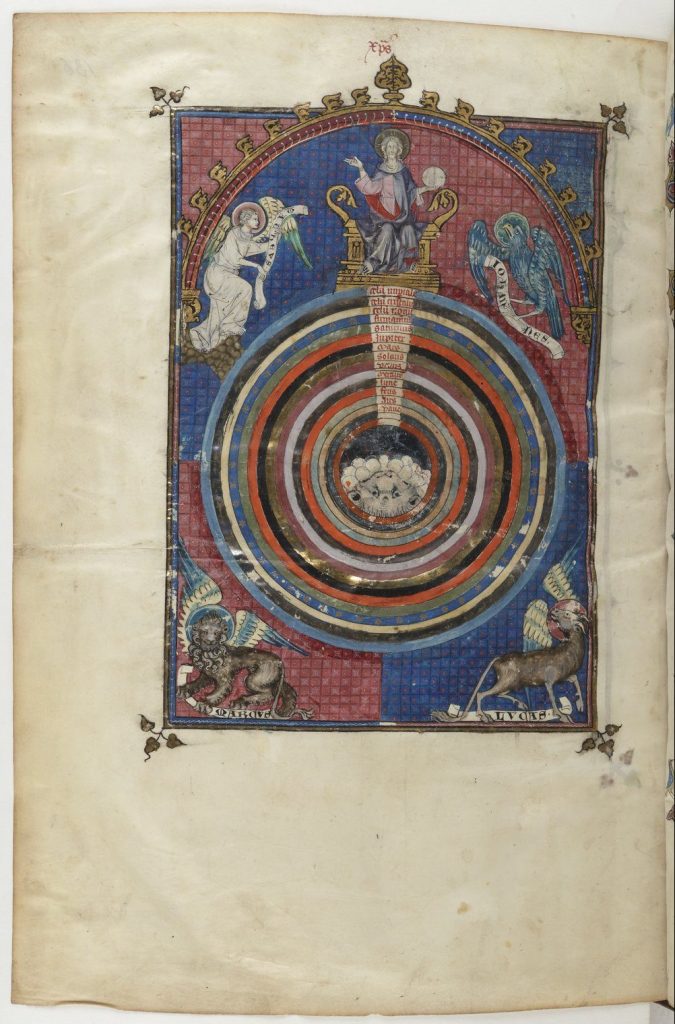
Figure 1. Spheres of Elements and Planets, Gossuin of Metz, L’image du monde, Paris, Bibliothèque nationale de France, Français 574, fol. 136v, 14th century. (Photo: courtesy of the Bibliothèque nationale de France).
The basic model of four indivisible elements which constitute the material world, an idea borrowed from Platonic and Aristotelian philosophy and interpolated through medieval Christian commentators, at first seems like solid ground upon which to build a cogent philosophy of nature. And yet, we already know how the story goes: the very notion of four elements does not stand up to rationalist, empirical science; the model fades with the blossoming of the Renaissance, and by the Scientific Revolution of the seventeenth and eighteenth centuries, it is all but abandoned.[4] The late Middle Ages, from the thirteenth to fifteenth centuries, thus represents a critical moment in the history of an idea: it is precisely when the dissolution of medieval elemental theory begins.
Coeval with this change in cosmological thought is a veritable revolution of representation.[5] As is well understood, the cataclysmic paradigm shift of the Renaissance was emphatically one of a change in visuality.[6]) The new “period eye,” as Baxandall famously called it, of early modernity, was perspectival, naturalistic, and thus humanistic; as modes of representation sought to mimetically recreate the world as it appeared, the human individual as seer, maker, and thinker gained increasing currency.[7] The late Middle Ages might be viewed, then, as a liminal zone between entrenched medieval, and nascent early modern, modes of representation. Manuscript imagery in this period shows a range of responses to these simultaneous ideological shifts: as thinkers and artists face challenges to cohesion, some subsume uncertainties under a veil of unified thinking, while others lean towards ambiguity.
Given the kaleidoscopic approaches in late medieval arts, it is unsurprising that scholars have not reached a consensus on describing the “period eye” of the era.[8] However, recent work surrounding two key artistic strategies—diagrammatics and abstraction[9]—illuminate significant characteristics related to shifting landscapes of both cosmological thought and visual representation in the late Middle Ages. Numerous recent publications orbit these topics, with important contributions made by Jeffrey Hamburger, David Roxburgh, and Linda Safran; Elina Gertsman; and Marcia Kupfer, Adam Cohen, and J.H. Chajes, as well as the many scholars that contributed essays to their edited volumes.[10] Much ink could be spilled over the methodologies and findings of this significant and wide-ranging body of work.
Only a few observations are needed here. Firstly, regarding new studies on the importance of diagrammatics to medieval image-making, the recent volumes edited by Hamburger et al. demonstrate that Harry Bober’s pivotal 1957 essay on a twelfth-century cosmological compendium continues to loom large. Since Bober’s mid-century theorization of scientific diagrams as “visual instruments” of learning, scholars have been persistently, and justifiably, preoccupied with the various ways in which schematics “shape, construct, and even constitute the process of thought itself.”[11] From such inquiries, a wealth of evidence has shown that diagrams promote certain kinds of thinking, namely those of an organizational and/or comparative quality.[12] Other research, brushing up against an adjacent scholarly interest in abstraction, focuses on the potentially transcendent qualities of schematic imagery.[13] Indeed, key formal qualities of medieval diagrams—especially their use of aniconism, geometry, and “emptiness”—are exactly those plumbed for meaning in Gertsman’s volume Abstraction in Medieval Art.[14] Across this collection of essays, abstract imagery in many guises is revealed to perform a panoply of significations: in one instance a painterly blob of color supplants the figure of Christ in order to articulate a theological argument about Creation; in another, the ornamentation of monograms complicates the relationship between sign and signifier in order to go beyond denotation and “express emotions and stir passions.”[15]
Modern theorizations of both diagrammatics and abstraction in the Middle Ages open themselves up to anachronistic comparanda, and likewise, critiques of anachronism. If we are to base our understanding of medieval image theory on medieval discourse, it might seem that medieval people had only a vague understanding of the diagram as a distinct category of representation or of abstraction as a stylistic choice.[16] Yet we know that imagery can be discursive, and that art can both reflect and generate ideas not articulated textually. With faith in art’s potentiality in mind, this essay adopts the methodological strategy of “intentional anachronism,” consciously applying modern perspectives and comparisons in order to generate speculative interpretations.[17] Modern theories of diagrammatics and abstraction, and also comparisons to modern painting, are used to circumvent deep-seated scholarly assumptions and make new observations about pre-modern arts.
A final caveat must be made before diving into the material: this study considers only a small fraction of the huge number of images directly depicting, or related to, the subject of the four elements. The examples presented here have been selected as exempla of distinct pictorial trends, but they are also united by their common engagement with pictorial stability and instability. That is, in the examples of four elements imagery investigated here, diagramming and abstracting are critically dual: these representational strategies engender ways of thinking that are both ‘rational’ and non-linear, organizational and chaotic, cohesive and ambiguous.
The four elements: ancient and medieval sources
As the authors of the theoretically rich volume Elemental Ecocriticism: Thinking with Earth, Air, Water, and Fire demonstrate, the characteristically premodern notion of the four elements was muddy, unstable, and constantly negotiated in literary projects of many kinds.[18] Indeed, “the elements are never easy:” despite efforts to fix meaning, there is a persistence of difficulty throughout ancient and medieval discourses surrounding elemental theory.[19] A brief summary of the historical sources and their main points of confusion must suffice here. One of the earliest philosophers of the elements, Empedocles, defines the elements—fire, air, water, and earth—as primary and indivisible entities that comprise all created matter.[20] Even in its earliest conception, elemental theory is mired in complexity, as Empedocles posits that two essential forces—love and strife—compel the constant and varied intermingling of the elements.[21] Building on this, Plato piles on complexity, explicating elemental relations through obscure geometry: in his Timaeus, the elements are associated with different geometrical solids, and the ratios among them undergird the order of nature.[22] While Platonic natural philosophy dominates until the twelfth century, Aristotle comes to the fore in the later Middle Ages, resulting from a spate of translations and commentaries by Arabic scholars. Aristotle, like Plato, sets the elements into concentric spheres, such that “the earth is surrounded by water, just as that is by the sphere of air, and that again by the sphere called that of fire.”[23] However, Aristotle focuses less on the elements’ essential qualities and more on their dynamics of change, which, for him, is the key characteristic of earthly nature. Indeed, Aristotle even adds a fifth element, quintessence to the supralunar realm, in order to differentiate the realm of celestial permanence from that of earthly fluctuation.
In even this, the briefest of summaries, a few critical issues emerge. Firstly, the ancients, and likewise medieval commentators and compilers, were obsessed with issues of the relations among the elements, whether it terms of their collision and separation via cosmic forces (Empedocles), their mathematical ratios as tangible bodies (Plato), or their participation in essential natural processes of growth and decay (Aristotle). Secondly, it is important to note that within each of these theories exist numerous conceptual lacunae, many of which have been interrogated for centuries and continue to plague philosophers and historians.[24] For example, in manuscripts of Isidore of Seville’s seventh-century De natura rerum, visual diagrammatics are employed as tools for working out complex ancient theory.[25] Here we see a rough start. The figura solid schema which attempts to picture the Platonic proportional relations among the elemental qualities—hold, cold, wet, and dry—is a prime example of early medieval confusion.[26] The image itself, a medieval invention, does not make much sense, as Isidore does not explicate how the mathematical ratios correspond to the three-dimensional cube. Moreover, if the model did hold some illustrative value in early copies of De natura rerum, later copies dissolve representational cohesion, quite literally: as Barbara Obrist has demonstrated, later versions add and subtract connecting lines in perplexing ways, flattening its dimensionality and its heuristic value.[27] This ambiguity is transmitted into numerous compendiums like Walters 73, the subject of Bober’s influential study on medieval diagrammatics (Fig. 2).[28]

Figure 2. Figura solida of the four elements, Baltimore, Walters MS 73, fol. 73 (top), 12th century. (Photo: courtesy of The Walters Art Museum).
The figura solida is but one example of early medieval efforts to picture the four elements; however, it is the later medieval world that is the focus of this essay. In the twelfth century and beyond, the unifying ambitions of scholasticism and encyclopedism further complicate things. Authors and artists not only contend with ancient sources, but also integrate them with theological authority in their totalizing views of nature. In what follows, three examples define the contours of late-medieval illustrative challenges to representing the four elements. A particular emphasis on water and earth surfaces in this study, as the connection between these elements offers a microcosmic view of the representation of elements. Moreover, as will be explained shortly, the relationship between water and earth was especially fraught. The three examples chosen encapsulate three distinct but interrelated book types with popular appeal in our period of question: a Bible, an encyclopedia of cosmology, and finally an encyclopedia that seeks to fuse cosmology with Christian theology and love poetry.
Chaos, Creation, and Mystical Transformation: A Bible from St. Albans
Naturally, the four elements appear as characters in Biblical Creation narrative, which articulates the beginning of the material world. Challenges to conceptual cohesion within Genesis itself plagued Scholastic artists, who were further tasked with conveying unity between the Scriptures and ancient natural philosophy. Within this web of discursive activity, water was a particularly central, and problematic, entity. Platonic and Aristotelian thought dictates that the “sphere” of water encloses the “sphere” of earth. Because earth is heavier, it should naturally move in a downward direction, seeking its rightful place beneath water. This theory is supported by observation, as a pebble sinks when tossed into a pond. However, on a larger scale, the opposite seems to be true, as the level of rivers, oceans, and seas is observable below that of land. For late-medieval thinkers, a suitable explanation for this seemingly erroneous phenomenon could be found in the Scriptures, in particular the third day of Creation in Genesis:
9. God also said; Let the waters that are under the heaven, be gathered together into one place: and let the dry land appear. And it was so done. 10. And God called the dry land, Earth; and the gathering together of the waters, he called Seas. And God saw that it was good.[29]
While medieval authors made sense of their authorities variously, there was a general consensus that while water and earth occupy distinct hierarchical spheres as Aristotle indicates, they are imperfectly concentric, such that dry land rises above the ‘sphere’ of water[30], thanks to the “gathering the waters” described in the Bible, which made habitable land.[31]
Water—in various forms—is the protagonist in both the second and third days of Creation, when the heavenly and earthly waters are divided, and when the seas are divided from dry land. And yet, waters are already present on day one, when the spirit moves over the “waters of the deep.” The apparent pre-existence of these primordial waters, and their relationship to both cosmic and earthly waters, were central in philosophical debates over whether God created the world ex nihilo.[32] While scriptural exegesis insisted that God created everything from nothing, Platonic theory stated that the cosmos was crafted by the Demiurge, an intermediary opifex or artifex created by God who gave form to pre-existing, primordial matter.[33] In the late Middle Ages, a new school of theologians turned towards the Platonic view, favoring a more ‘scientific’ approach to nature; others clung to the more conservative view of Creation as the very foundation of salvation history.[34]
Artists of Creation cycles sometimes boldly articulated their stance on the proper interpretation of the Bible vis-à-vis natural philosophy. In a late twelfth-century Bible from St. Albans Abbey, for example, the roundel for the second day includes the Greek word hile,[35] the Platonic word for primordial chaos used in Calcidius’s fourth-century commentary on Timaeus (Fig. 2).[36]

Figure 3. Frontispiece to Genesis with the six days of Creation, Cambridge, Corpus Christi College, MS 48, fol. 7v, late 12th century. (Photo: courtesy of Corpus Christi College).
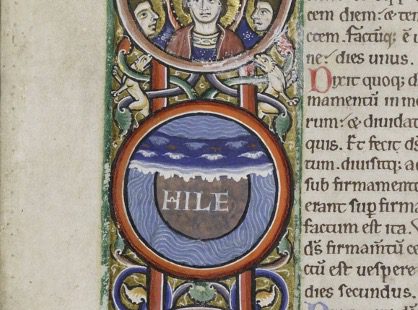
Figure 3, detail. Frontispiece to Genesis with the six days of Creation, Cambridge, Corpus Christi College, MS 48, fol. 7v, late 12th century. (Photo: courtesy of Corpus Christi College).
As Ittai Weinryb has pointed out, the challenge of giving form to formlessness evidently caused the artist to opt for “a textual substitution rather than a representational attempt.”[37] However, the inscribed miniature is not devoid of visual dimensionality. Not at all throwing in the towel on the task of representing the unrepresentable, the artist has attempted much in this little miniature, visualizing the emergence of form from primordial chaos through crisp white lettering upon a hazy marbled surface. That is, the linguistic sign signifies the first instance of form taking shape from the chaotic matter of earth, which appears still “inert, confused, and disorderly.”[38] Moreover, around this central scene, there are waters of multiple kinds—all expressed by the conventional iconography of white wavy lines on blue ground—relating to the second day of Creation, when the heavenly and earthly waters are separated by the delineation of the firmament.[39]
This vision of the origin of the world it presents is emphatically fluid—both in terms of watery forms everywhere, and a fluidity of representation. Earthly and heavenly waters are visually articulated as spatially distinct (through their compositional arrangement) but also intrinsically connected (by their similar morphology).[40] Even the central formless matter of primordial chaos, with its marbled surface, evokes aqueousness. As scholars have noted, the abstract visuality of marble was appreciated since the ancient world for its capacity to suggest liquidity, and its correlated implicit imagery in its linear veining, as artists sometimes emphasized “potential images” hidden in marbled patterns.[41] Thus, the fluid surface effects of stones—and simulations of such surface effects—could be manipulated in medieval Christian contexts towards various metaphorical ends, such as invoking the idea of “walking on water” by their placement on church floors, as Fabio Barry has shown.[42]
Given the profound metaphoric capacity of amorphous forms, the central marble and the fluid striations that surround it might be understood as attempts to picture inchoate matter, in all its latent potentiality. As such, the central word “hile” can be seen as more than a tired substitution for depicting formlessness, and instead as another layer of marking out the primary emergence of form. The sharp white letters seem to almost come forth from the amorphous, and aqueous, background, as if an utterance of the beginning. Like the initial “I” of “In principio” into which it is embedded, the word “hile” uses text as image, thereby invoking complex Christological metaphors of image and incarnation, that is, “the Word made flesh.”[43] In this way, through the purposeful elision between word and image, “hile,” like the initial “I,” marks out the articulation of form that is initiated at the beginning of the world, Christian history, the Bible as text, and the manuscript as object.
The concept of water as primary cosmological matter could also be connected to its centrality in Christian metaphysics. Such resonances can be gleaned through water’s central role in miracles of judgment and transformation—Noah’s ark, Moses and the Red Sea, the Wedding at Cana, and Baptism to name just the most significant examples.[44] Contemporaneous, but geographically distant, the mosaics at Monreale Cathedral offer a visually effusive example of water as both primordial matter and mystical medium for transcendence (Fig. 4).[45]
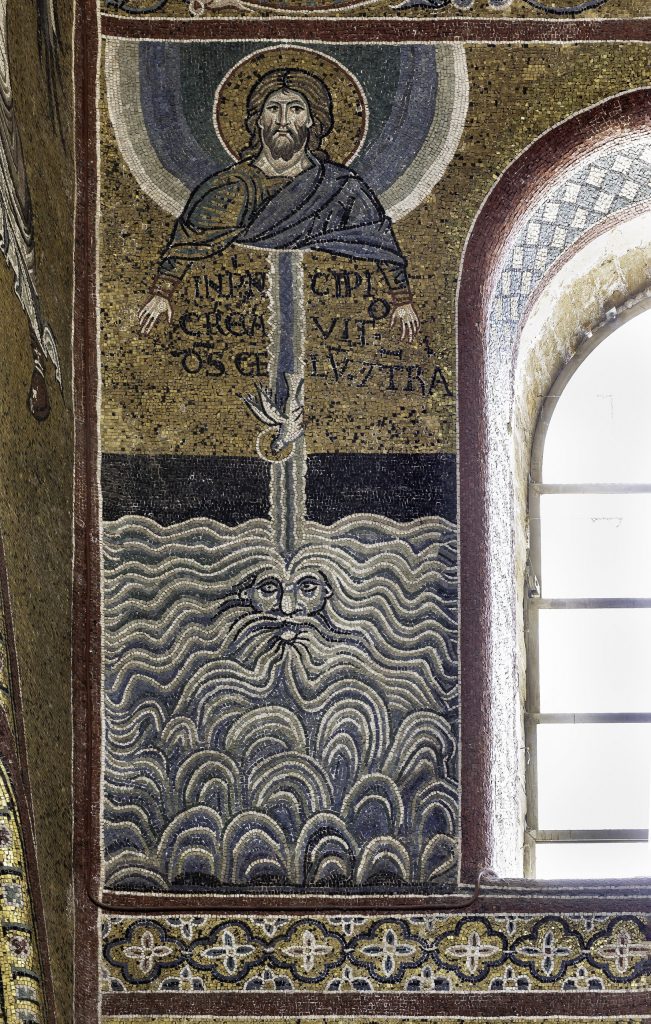
Figure 4. First day of Creation, Monreale Cathedral, Palermo, Sicily, late 12th century. (Photo: courtesy of Ghigo Roli).
Like the Bible from St. Albans, an aqueous vision of the origin of the world at Monreale is realized through complex text-image dynamics that conjure ideas of figuration and presence. While the inscription simply indicates the first line of Genesis, “In the beginning God created the heavens and earth,” the mosaic fills in the rest, that “darkness was over the face of the deep, and the spirit of God was hovering over the surface of the waters.” Here, the abstract and intangible “formless void” described in Genesis is pictured as a tangible body of matter that is inhabited, animated, and activated.
A certain confidence in representational fluidity is conveyed by the manner in which striations, signifying both water and face (beard, hair, etc.), converge and become indistinguishable from one another. Squiggly lines are both abstract signifiers of formless matter and articulations of its metaphorical face. Such watery transformations could be heightened by the effects of mosaic, as the face within the linear striations of “the deep” might emerge and retreat as candlelight flickers over the surface of glass tesserae.[46] Thus, the mosaic as medium perceptually heightens the iconography of these “squiggly lines,” generating dynamics of transformation: from nothingness to somethingness, from spirit to matter, and back again.
It is precisely because of water’s participation in cosmic formation that it gains potency as an agent of divine transformation in the illustrative logic of the mosaics at Monreale Cathedral in Sicily.[47] Indeed, the “waters of the deep” at Monreale are not only echoed by the heavenly waters and earthly waters of the subsequent Creation narrative, but also paralleled by the salvific flood in the story of Noah’s ark, depicted in the register directly below. This mirroring puts the Platonic idea of primordial chaos as an important beginning to Christian history and metaphysics, emphasizing water as always already[48] both earthly and heavenly, and therefore potential conduit of the divine.
Returning to the Bible from St. Albans after this journey to Monreale, we can see how these themes of water as cosmic ur-matter and medium of redemption play out in the manuscript context. While the centrality of watery forms in Creation imagery is, of course, dependent upon the text itself, the particularities of its articulation might suggest profound ideas about both cosmology and representation.[49] Yet, the overwhelming fluidity—both literally, in the sense of an abundance of waters, and conceptually, as the precise signification of chaos emerges and retreats—might be meaningful. Perhaps this aqueous beginning, through its assertion of ambiguity, is both a depiction of the ultimate unknowability of Creation and a precursor of Christian mysteries to come.
Worldly Elements, Otherworldly Vision: The Four Elements as Spheres in L’image du Monde
In the thirteenth century, the so-called “century of encyclopedias,” a taxonomical, organizational, and proto-rationalist spirit generated numerous compendia of knowledge.[50] The manuscripts of Gossuin of Metz’s L’image du Monde (ca. 1245) exemplify this tradition.[51] As a summa of cosmology, geography, and earth sciences, L’image du monde draws together watered-down Platonic and Aristotelian theories, which Gossuin likely encountered indirectly, through any number of commentaries and treatises, like Sacrobosco’s wildly popular Tractatus de Sphaera.[52] Intended for a non-specialist audience, various historical and contemporary authorities are subsumed under the more accessible, but evocative, diction of Gossuin as sole author.
The illustrative program of L’image du monde is likewise appealing for its comprehensibility and visual effectiveness. Looking at a fourteenth-century prose copy as our exemplar, we see that the simple geometry of the image of the four elements lays the groundwork for the encyclopedia’s cosmological content (Fig. 5).
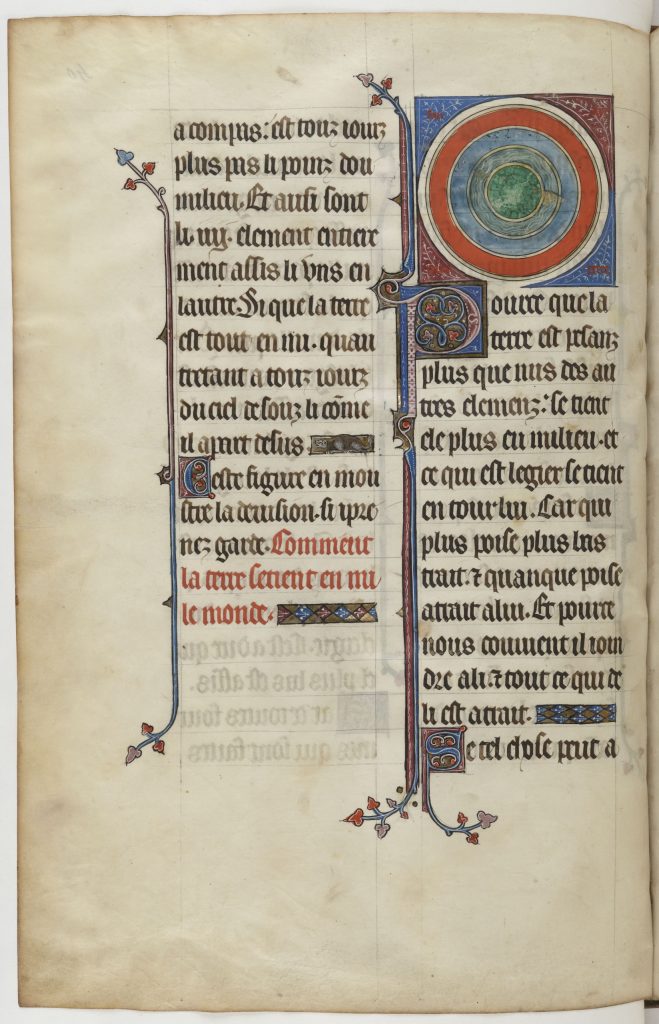
Figure 5. Spheres of Four Elements, Gossuin of Metz, L’image du monde, Paris, Bibliothèque nationale de France, Français 574, fol. 40v, 14th century. (Photo: courtesy of the Bibliothèque nationale de France).
Importantly, the diagram of the four elements is the first of a series of schemata, following a group of introductory figural images. The topic of the elements, and the elemental diagram, are therefore crucial beginnings, in the sense that Edward Said has theorized the term; their conceptualization marks “the first step in the intentional production of meaning.”[53] As such, the perfect concentricity of the elemental spheres serves as the pictorial and conceptual basis for the entire created cosmos, as seen in the series of images that increase in complexity on fols. 92r, 94r, and 95v, and ultimately in the unified cosmological image that concludes most manuscripts of L’image du monde, here on fol. 136v (Fig. 1).
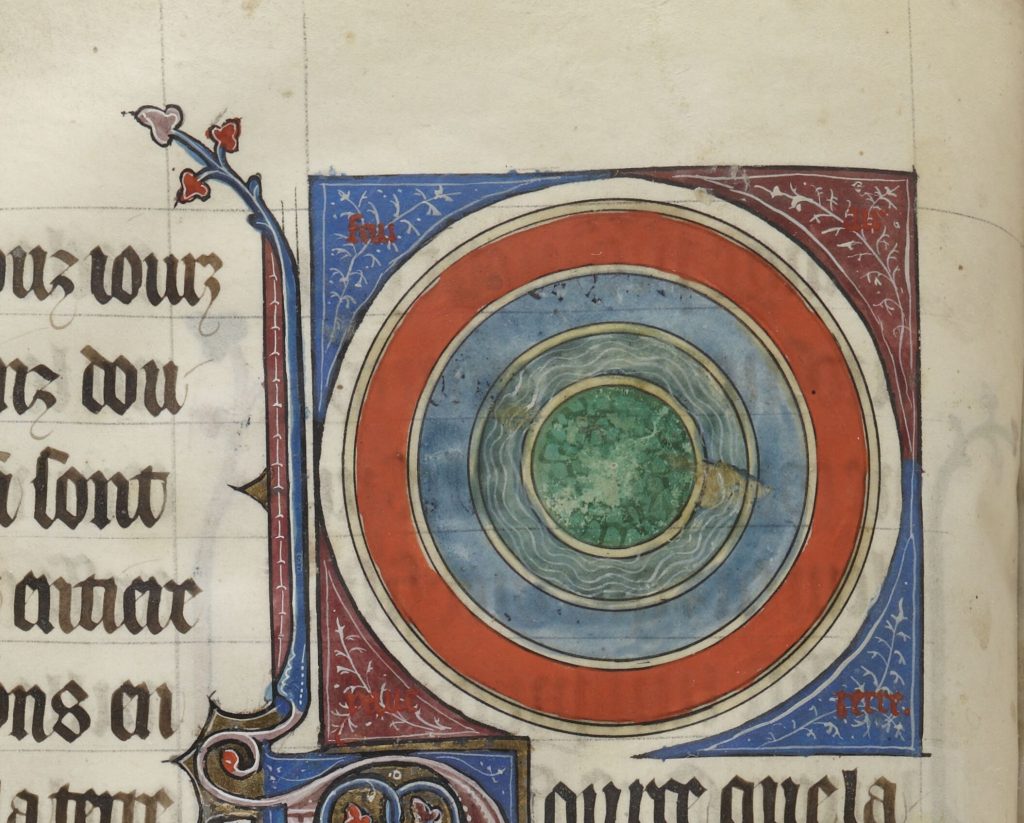
Figure 5, detail. Spheres of Four Elements, Gossuin of Metz, L’image du monde, Paris, Bibliothèque nationale de France, Français 574, fol. 40v, 14th century. (Photo: courtesy of the Bibliothèque nationale de France).
Corresponding to the textual section “On how the four elements are arranged,” the miniature conveys the basic composition of the elements in concentric spheres.[54] Therefore, just as the subject of elements lays the structural ground for natural philosophy, so too does this first image establish a kind of visual ontology of the encyclopedia.[55]
The image of the four elements corresponds to a textual description of their physical arrangement, a simple summation of Aristotelian concentric spheres that describes how each element encloses the next (Fig. 4 detail). But Gossuin enlivens this basic idea with imagistic prose. Offering the compelling metaphor of an egg, the text describes how “in an egg we see that the white encloses the yolk, and inside the yolk is also a drop of fat that is not fixed anywhere; this drop of fat stands freely in the middle without touching the white anywhere.”[56] Noticeably, there is a profound disconnect between the strict diagrammatic schema and the relatively fluid textual description. While the description conjures the “not fixed”—that is, partially amorphous and freely moving—qualities of viscous egg parts, the image gives almost no sense of flexibility; only the wavy lines of the realm of water suggest some movement, but they, like the other colored rings, are tightly bound by a strict circumference.
Thus, the diagram appears easy and stable: the concentric rings are an armature for absolute solidity; no admission is made for the complexities of commingling, fluctuation, or amorphousness. To be sure, this simple geometric scheme in which the elements occupy distinct concentric spheres—each totally enclosing and totally enclosed by another—was obviously understood as an oversimplification since Aristotle himself, who expounded extensively on the intermixing of elements in the earthly realm.[57] And indeed, the fallibility of the model was not overlooked by medieval authors, as comments on the dynamic relations among the elements pervade natural philosophical discourse.[58] Yet, despite all its inadequacies, the model of concentric rings shows up for centuries, even into the Renaissance.[59] It would seem, then, that the persistence of such basic bulls-eye diagrams evinces an aversion to conceptual and representational difficulty.
Such easy readings can be complicated through intentionally anachronistic comparisons to formally similar but historically distant arts.[60] Consideration of modern paintings by Jasper Johns offers alternative ways of seeing concentric rings, and uncovers layers of perceptual complexity. Johns’s Target with Four Faces from 1955 exemplifies the kind of scopic consciousness normally associated with twentieth-century painting (Fig. 6).[61]
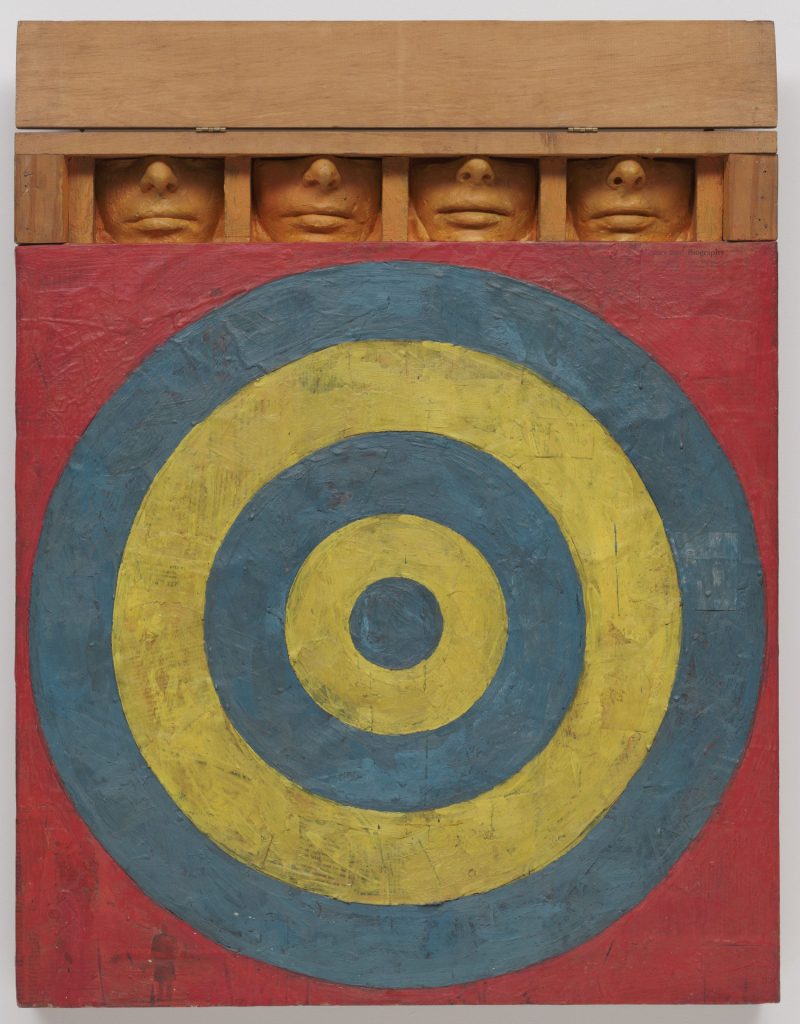
Figure 6. Jasper Johns, Target with Four Faces, 1955. (Digital Image: The Museum of Modern Art/Licensed by Scala/Art Resource, NY).
Art historians have demonstrated that Johns’s iterative canvases deploying targets—much like his famous flags—invite self-aware viewership, “focus[ing] attention on the theme of viewing”[62] and challenging audiences to contemplate their habits as viewers.[63] Johns takes the target, a geometric form that usually directs vision as “something to aim at,” and turns into a dynamic object that fragments the gaze.[64] This perceptual oscillation between graphic shape and material presence is evoked through the painterly qualities of Johns’s target, and further complicated by the four sculptural heads, aligned above the top edge of the canvas, which heighten the viewer’s sensitivity to depicted versus real space. Moreover, with their eyes obscured, the sculpted faces evoke a sense of discomfort since their implicit act of seeing cannot be seen by the viewer. That is, the viewer is inserted into an uneasy loop of seeing and being seen, and thus propelled into an awkward moment of self-conscious viewership.
Such scopic complexity could also play into medieval diagrams of concentric spheres. For example, in the monumental Creation fresco at the Camposanto in Pisa, painted by Pietro da Orvieto ca. 1390, the figure of God above—like the four faces in Johns’ Target—seems to catch the viewer in the midst of viewing (Fig. 7).[65]

Figure 7. Pietro di Puccio, Universal diagram fresco, Camposanto Monumentale, Pisa, late 14th century. (Photo: taken by Miguel Hermoso Cuesta with use courtesy of Wikimedia Commons under Creative Commons License CC-BY-SA-4.0).
In another example from a fourteenth-century manuscript of Peter of Lombard’s Sentences, the split gazes above thrust the viewer into an uncomfortable position of self-awareness as viewer: because one figure (the Holy Spirit?) looks towards the text, and the other (God?) looks towards the cosmos, the viewer of the manuscript might feel unsure of where to look (Fig. 8). Prompted by such interruptions—both in the monumental fresco and the small manuscript miniature—the viewer may consider any number of things related to their perceptive process, for example, what to look at and how, or the link between looking, especially at diagrammatic forms, and the acquisition of knowledge.

Figure 8. Creation miniature, Peter of Lombard, Sentences, Vatican City, Biblioteca Apostolica Vaticana, Vat. Lat. 681, fol. 96. (Photo: courtesy of the Biblioteca Apostolica Vaticana).
What is it about concentric spheres, or diagrammatic forms in general, that demand such perceptual self-consciousness? A remarkable pair of miniatures in a later, fifteenth-century copy of L’image du Monde at the British Library (BL Harley 334), with its implications for late-medieval image theory, can help us answer this question. On folio 33v appears a familiar trope of God as “architect” or “artist” of the cosmos, as famously seen in the frontispieces to royal Bible moralisée (Fig. 9).[66]
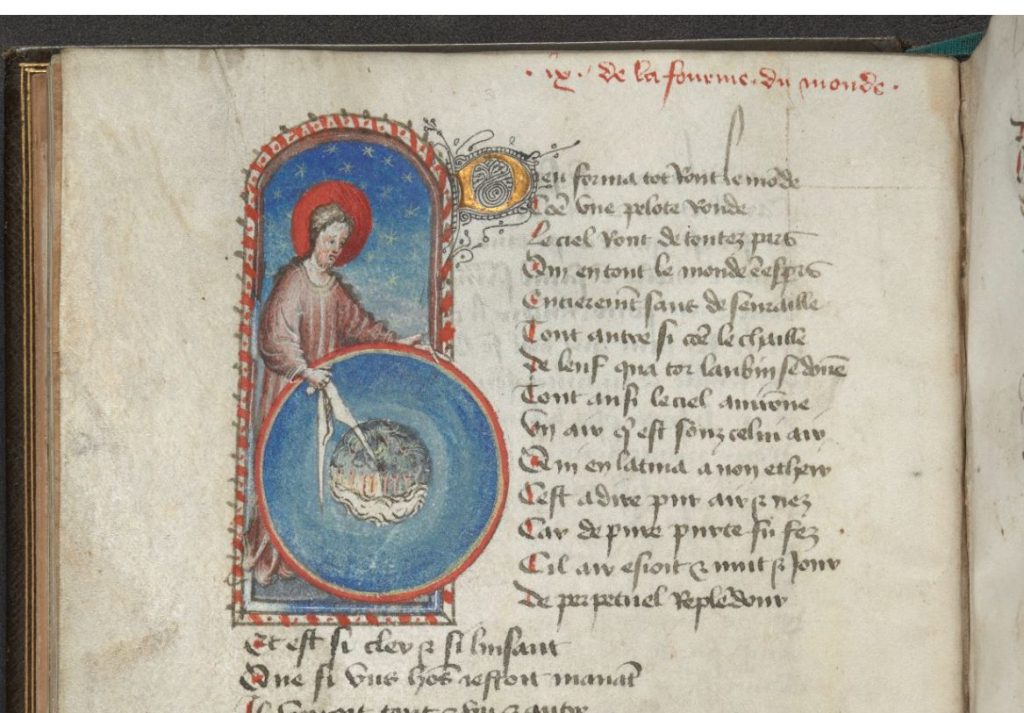
Figure 9. London, British Library Harley 334, fol. 34 v. God as architect, Gossuin of Metz, L’image du Monde.
Here the image corresponds to the textual passage “On the form of the world” which begins by explaining that God made the whole world round, like a ball.[67] The artist of this proto-Renaissance copy has even tried to simulate dimensionality through the modeling of the blue world, insisting upon spherical, rather than two-dimensional, roundness. Later in the manuscript we find a unique response to the classic image of God crafting the world: on folio 94v, a scholar drawing a diagram accompanies a passage on mathematical astronomy, and “why and how one measures the world” (Fig. 10).
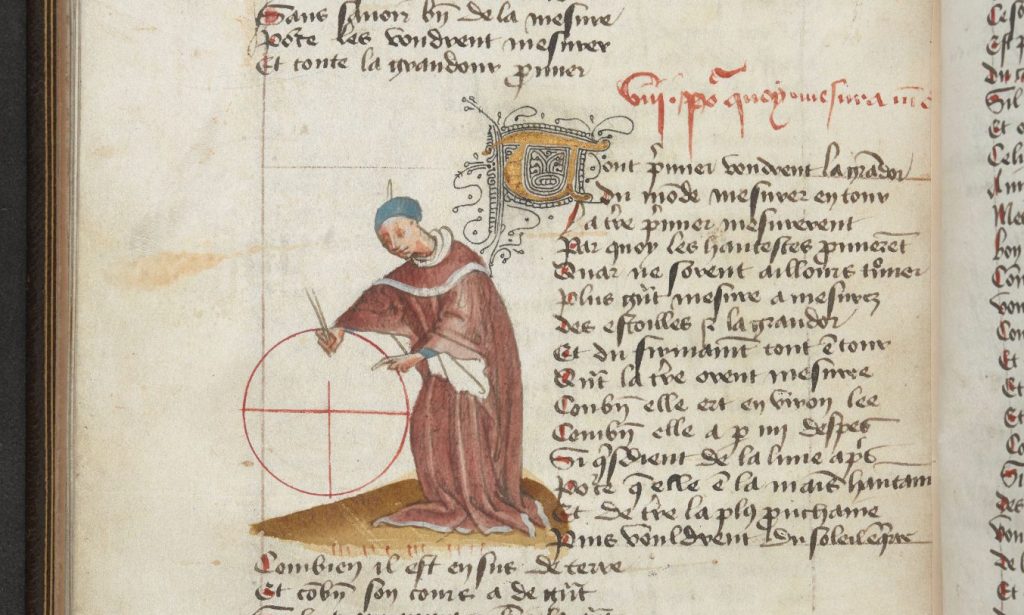
Figure 10. Scholar drawing a diagram, Gossuin of Metz, L’image du Monde, London, British Library, Harley 334, fol. 94 v, 15th century. (Photo: courtesy of the British Library).
The incompleteness of the schema he draws expresses an attention to process over product; he is defined as a thinker by his immersion into the creative act of drawing. What’s more, the representational disconnect between human and diagrammatic figures compels self-reflexive thinking. Contrasting with the arrestingly three-dimensional human, the diagram he draws is insistently flat. Of course, it makes sense that the person is a three-dimensional body, while the diagram is a two-dimensional drawing. But in another way, this juxtaposition breaks the representational logic; one could have shown him drawing on a tablet or in a manuscript in some perspectival way. This little image of a scholar drawing a diagram thus prompts consideration, through its rupture of diegetic cohesion, about the definition of the diagram as a special mode of representation that requires a particular kind of looking.
The very fact that the model of four elements as concentric spheres persisted for so long, despite its obvious oversimplification, seems to suggest that it meant something beyond physical theory. But what exactly? One possibility is that, through their adherence to both strict hierarchy (through concentricity) and ultimate unity (through sphericity), such forms assert Created nature as divine perfection, and thus articulate a positive view of mimetic image-making. In other words, geometry does not merely depict natural order but rather re-creates it; drawn lines are carriers of meaning, as the artist’s delineation of perfect concentric circles mimics and celebrates the ordering of divine Creation. Moreover, even in the most basic image of concentric spheres, like that in L’image du monde, the elements are not as easy as they first appear, as the schematic form is an obvious oversimplification of a more complex reality (in which the elements are constantly intermingling). Precisely because of its apparent failure to convey elemental dynamics, it asks viewers to look at it differently; that is, as something other than a mimetic picture of the physical arrangement of matter. In doing so, it suggests that diagrams promote a kind of abstract visuality, wherein both maker and user are challenged to extend seeing—and thinking—beyond earthly, observable, physical realities.
Abstraction as an Unwavering Faith in Images: The Breviari d’amor and Hilma af Klint
A final case study demonstrates what happens when the (deceptively) easy model of concentric rings is abandoned, a new figure is attempted, and representation falls apart. The Breviari d’amor, a vernacular encyclopedia written at the end of the thirteenth century and accompanied by profuse illustrations differs from L’image du monde in its literary ambitions.[68] In the Breviari, cosmology not the sole focus: this Occitan poem of over 30,000 lines begins with a summa of natural philosophy, then turns to Biblical doctrine before presenting a unique discourse on courtly love ethics. This final part, a real compendium of troubadour lyric, exemplifies the idiosyncratic character of the Breviari among encyclopedias, which was conceived by its author Matfre Ermengaud as a local Occitan response to the great encyclopedias of Parisian scholastics. In addition to celebrating this local cultural product of troubadour poetry, it also displays its regional expertise in astronomical and earth sciences through numerous innovative images, for example, a diagram depicting the mathematical distances of the cosmos, or another explicating the mariner’s sixteen-winds instead of the traditional twelve.[69]
The Breviari’s extensive visual program of cosmological imagery can thus be understood as a conspicuous display of local worldly knowledge, particularly of a natural scientific sort.[70] It is here that we find a strange miniature, stuck in the middle of the discourse on the four elements (Figs. 11-15) depicting water and earth together—and separate from the other elements, which are not pictured whatsoever. This isolation of water and earth, and omission of fire and air, suggests that water and earth and their relationship deserved special attention. Perhaps reflecting the popular ambitions of the Breviari as a whole; the lofty elements fire and air are honored for their “celestial purity” and spiritual powers, but the humbler elements water and earth are celebrated for their more mundane, yet crucial, life-sustaining properties. As the section on water begins: “Water…is of great good and of great necessity” because it not only “tempers celestial burning” but also “gives the earth…all living things.”[71] Likewise, the opening lines on the passage regarding the earth emphasizes its smallness with respect to the starry sky, and yet the essential bodily nourishment that “mother earth” provides to all living things.[72] Thus, there is a sense that the focus on water and earth corresponds to the encyclopedia’s turn away from overly lofty theological subjects in favor of more worldly concerns.[73]
Despite the apparent significance of water and earth as subjects for this down-to-earth encyclopedia, the miniature is laden with ambiguities, uncertainties, and inconsistencies from one manuscript to the next. Instead of adopting that simple model seen in L’image du monde, the creators of Breviari manuscripts attempted something else. In the earliest extant copy of the Breviari, likely made ca. 1320 in Toulouse, the image of water and earth looks more like a perspectival figure than a diagram, seemingly showing those two elements occupying a single sphere of the world (Fig. 11).

Figure 11. Elements water and earth, Matfre Ermengaud, Breviari d’amor, London, British Library, Royal MS 19 C I, fol. 48r, Toulouse, ca. 1320-25. (Photo: courtesy of the British Library).
That is, if the two-dimensional circle represents a three-dimensional sphere, then the bottom crescent with its wavy lines represents water, which girds the (oddly) blue land mass above.[74] Importantly, the ‘spheres’ of water and earth are inarticulate, possibly reflecting confusion over the disconnect between the notion of elemental spheres and basic observation. As previously mentioned, the idea of a distinct sphere of water ‘above’ that of earth defies common sense, as water tends to flow in a downward direction, trickling beneath the ground in cracks and crevices, and joining rivers and seas that ostensibly sit below the horizon of land.[75]
Artists of subsequent Breviari manuscripts seem to have identified the lack of distinct spheres as a “mistake” and promptly tried to “correct” it; there are no other copies in which water and earth are enclosed by a shared circumference. Most copies take an approach seen in a Catalonian manuscript from around 1400, where the spheres of water and earth are emphatically differentiated (Fig. 12). This more cross-sectional formulation suggests that while the earth is perfectly spherical, we humans only see the exposed part of it, since the lower half is submerged under the oceans. The ‘sphere’ of water, on the other hand, is imperfectly spherical; it does not enclose the whole earth, but rather wraps around half of it.
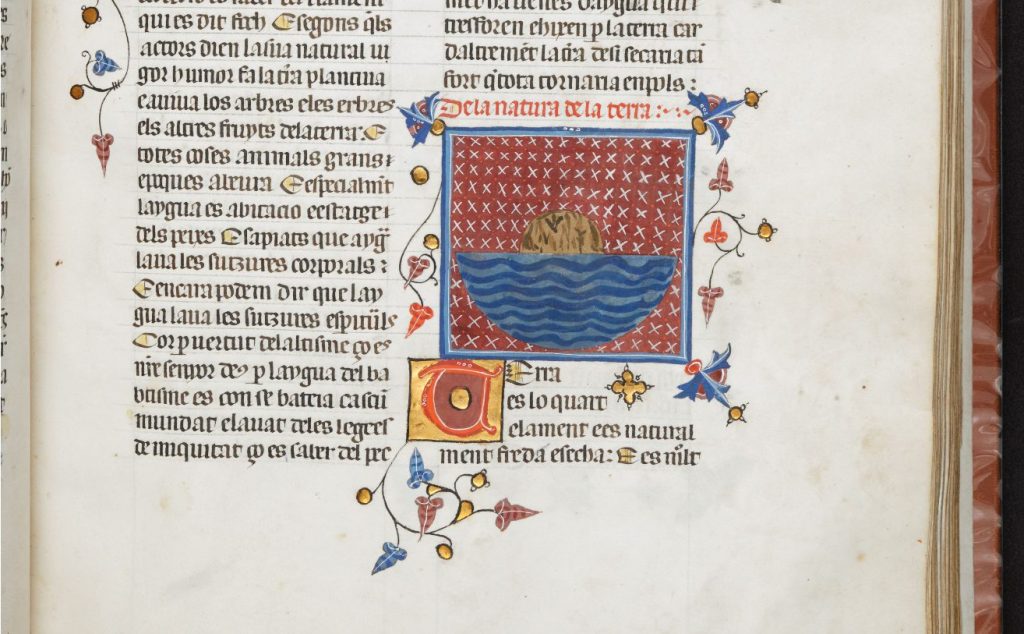
Figure 12. Elements water and earth, Matfre Ermengaud, Breviari d’amor, London, British Library, Yates Thompson MS 31, fol. 63r, Gerona, ca. 1400. (Photo: courtesy of the British Library).
This model corresponds more closely to the text, which explains the imperfect concentricity of water around earth in several manners. First, it offers the standard Biblical explanation, namely, that water does not enclose earth completely, because during Creation God established a place for living creatures.[76] Matfre also supplies a charming metaphor, which further explains the physical relationship between the bodies of water and earth: as if an apple floating in water, the part “above” the water is quite small in comparison that the part submerged below the water.[77] The later Catalan example is the most accurate to the text and the most conceptually sound; indeed it looks like a picture of an earthly mass—as if an apple—floating in water.[78] However, confusions abound in earlier copies. In another copy made in Toulouse ca. 1350-1370, the two semi-circles are decorated exactly the same—in a golden hue with hatched waves—such that it is impossible to differentiate between water and earth (Fig. 13).
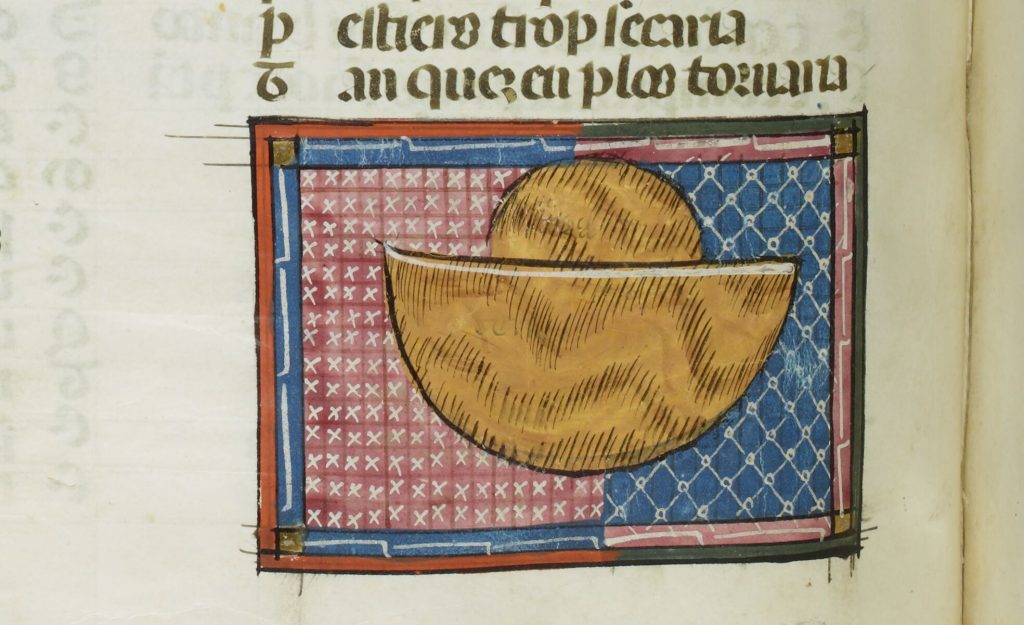
Figure 13. Elements water and earth, Matfre Ermengaud, Breviari d’amor, Paris, Bibliothèque nationale de France, Français MS 857, fol. 46v, Toulouse, ca. 1350-1370. (Photo: courtesy of the Bibliothèque nationale de France).
In a later Catalan example from the cusp of the 15th century, this ambiguity appears again, as the upper portion perplexingly looks like water, despite the wavy edge of the lower segment (Fig. 14).[79] These examples show that not all artists understood their visual exemplar nor the text.[80]
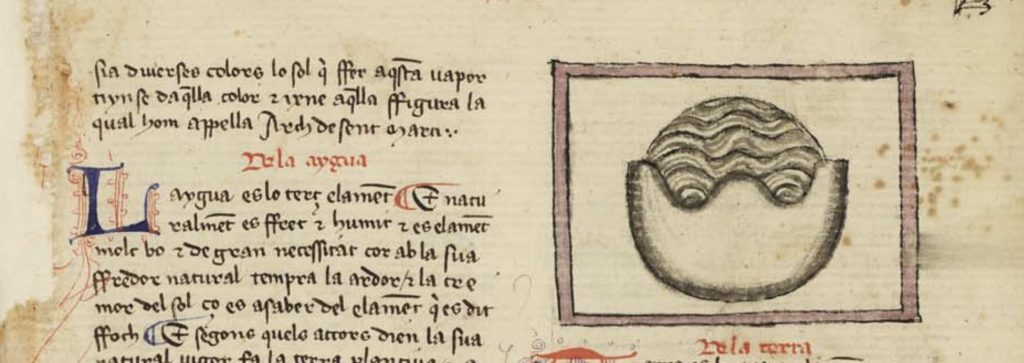
Figure 14. Elements water and earth, Matfre Ermengaud, Breviari d’amor, Madrid, Biblioteca Nacional de España, Res. MS 203, fol. 36r, Lleida, very end of 14th century. (Photo: courtesy of the Biblioteca Nacional de España).
Some idiosyncratic approaches are more compelling, though, and may even reveal artistic ambition. A 14th-century copy from Toulouse stands out as distinct with its rigid, schematic structure and bold coloration (Fig. 15) While at first glance it seems to be the work of a confident artist with a clear vision, its instability quickly becomes apparent.[81] While the graphic shape is readily comparable to the “apple in water” model, extra decoration complicates things. If the blue semicircle is land, floating in the gray semicircle of water, then what do the baby blue and soft pink arcs, or the bold red ring represent: perhaps the light blue is air, the pink fire, and the red circumference the boundary of the earthly elements?[82]
While this idiosyncratic version is ultimately ambiguous in meaning, it has significant implications for this survey of elemental images. Firstly, the image apparently attempts to convey some sense of the diagrammatic spheres of elements, like that seen in L’image du monde. Secondly, it apparently also tries to show some kind of perspectival, that is, non-diagrammatic or cross-section view of the elemental relations. It is precisely this blurring of representational modes that renders the image illegible: it reads as both a diagram of the elements as theoretical entities and an image of their physical arrangement in the real world.
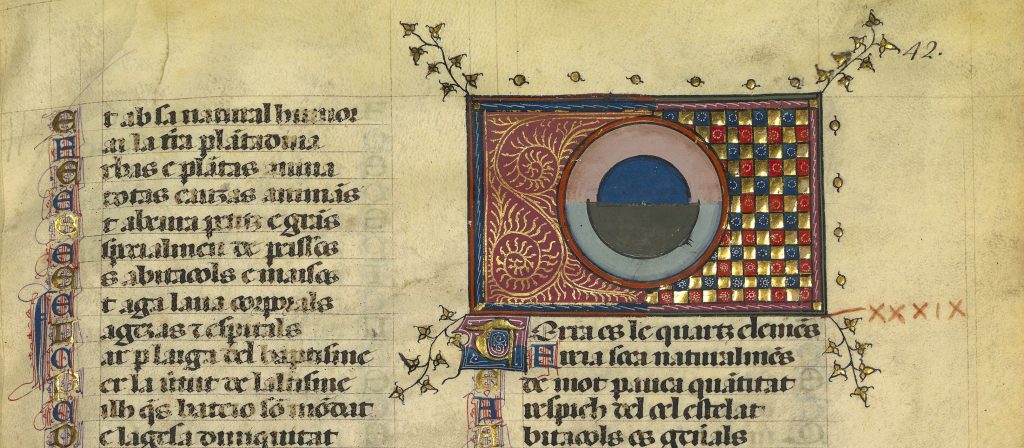
Figure 15. Elements water and earth, Matfre Ermengaud, Breviari d’amor, Paris, Bibliothèque nationale de France, Français MS 9219, fol. 42r, Toulouse, ca. 1350-1370. (Photo: courtesy of the Bibliothèque nationale de France).
As Herbert Kessler has recently said, “what appears to be abstraction was often a way medieval art mediated levels of meaning and engendered a competition of imaginations.”[83] The slippage among diagram, figure, and symbol evokes a disconcerting sense of groundlessness. Perhaps this lack of clarity results from, or even insists upon, the speculative viewing practices of artist and audience. As the images present the elements as spheres both materially and conceptually, they insist that viewers oscillate between seeing pictorially and thinking diagrammatically. Comparisons to modern abstraction can push this line of thinking even further. Despite general acceptance that abstraction is a pervasive mode throughout the Middle Ages, its theorization remains diffuse. Gertsman’s edited volume of essays offers a major contribution to the discourse, presenting wide-ranging methodological approaches to equally wide-ranging topics, and thus making headway towards understanding medieval abstraction.[84] Within this volume, authors seem divided on whether anachronistic comparisons are useful or damaging; while some use modern comparanda to work through medieval questions, others insist that such methodologies perpetuate ahistoric views of past arts.[85] It is my view that conscious anachronism provides new theories about historic arts, and more importantly, offers methods for exposing and addressing otherwise covert, entrenched modern interpretations.
The ‘abstract’ images of the Breviari d’amor find striking visual resonance with the modern paintings of Hilma af Klint (Sweden, 1862-1944) (Fig. 16).
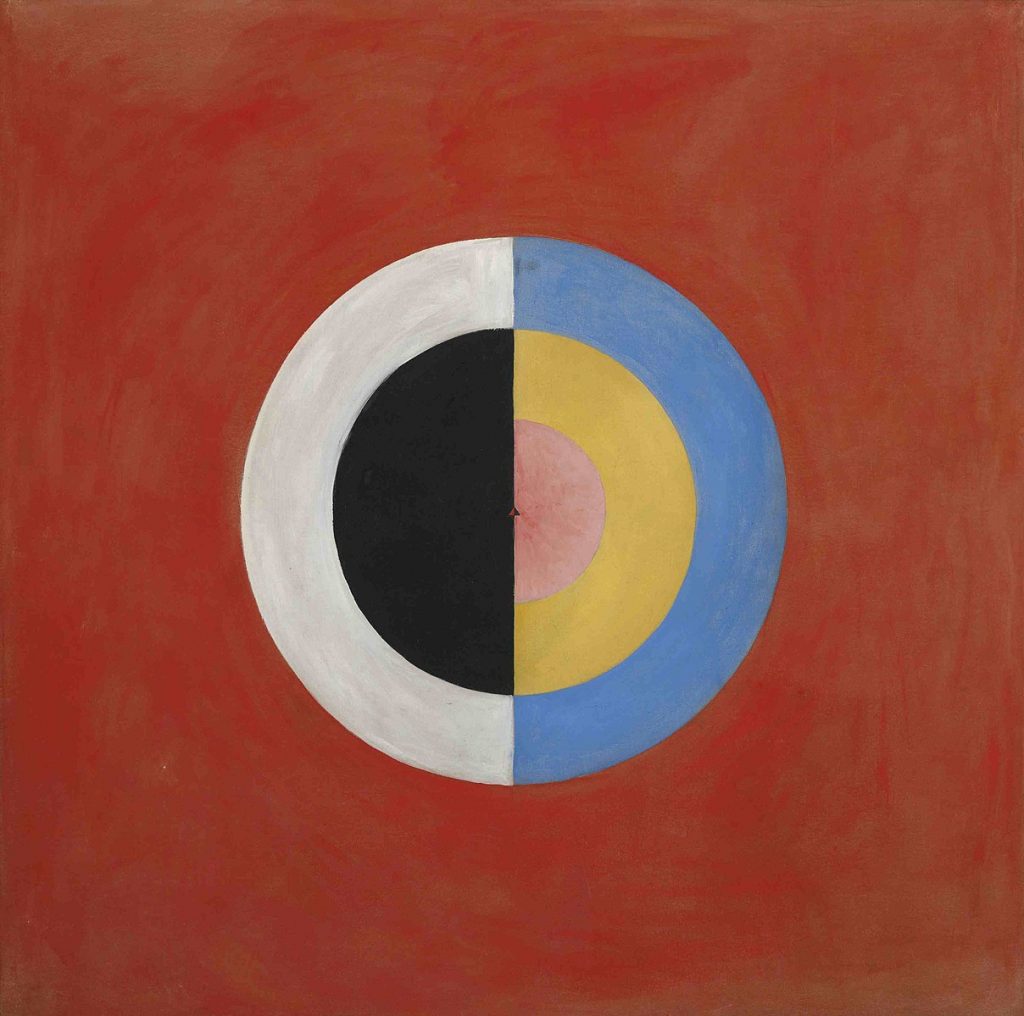
Figure 16. Hilma af Klint, The Swan, No. 17, 1915. (Photo: in the public domain with use courtesy of Wikimedia Commons under Creative Commons License CC-PD-Mark).
However, the conversation between these two traditions is not merely formal; there are significant conceptual links which, when interrogated, can expand our understanding of both traditions. Af Klint was apparently compelled by an encyclopedic impulse (one with parallels in the late Middle Ages) that led her to compile capaciously, organize obsessively, and also invent new visual models to represent a totality of knowledge.[86] Recently championed as the first abstract painter, af Klint made increasingly non-objective works throughout her career, reducing her canvases to geometric shapes and bold colors.[87] Thus, her particular version of abstraction should be understood not as anti-representational or “without meaning,” but quite the opposite—as the necessary visual companion to a deeply epistemic endeavor. For example, af Klint’s Svanen (The Swan) series, comprising twenty-four paintings made between 1914 and 1915, deploys shape and color as elementary signifiers of her symbolic worldview. As an important alchemical symbol, the swan signifies the fusion of opposite qualities needed to produce the philosopher’s stone. The swan series charts a kind of alchemical progression in which black and white swans collide, entangle, and pull apart. Imbued with symbolic and mystical meaning, af Klint’s abstraction reveals an intentional break from mimetic representation of things in the world in an effort to access more profound mystic truths. As such, af Klint’s wildly original abstract forms are not “non-representational,” but rather super-representational—that is, efforts to depict even the unknown, or “paint the unseen,” as some have said.[88]
The Breviari’s abstraction might be chalked up to a kind of representational failure, whereby a confused artist, working with an already flawed model, produced something unintelligible. However, the embrace of abstraction in the Breviari might, like that of af Klint, reflect an intentional representation of things beyond perception—whether elemental relations on earth, or some more mystical concept like the role of the elements in Creation. Taking it one step further, the abstract forms of both medieval and modern artists might evince self-reflection on the limits of image- and meaning-making. The threat that abstraction poses to interpretation, according to Yves-Alain Bois, is that “in the absence of the image one is, or should be, forced to abandon the idealist concept of meaning.”[89] The idealist concept that he refers to is exactly the Aristotelian, and the later Kantian, notion that form pre-exists matter. As Bois describes it, classical and idealistic theories suggest that “form is an a priori UFO that lands on raw matter, rescues it from its dark inertness, and transports it to the sunny realm of ideas.”[90] In Bois’ characteristically literary prose, it is unclear whether this landing occurs at the level of the original creation of matter (at the beginning of the universe), the creation of things (as in art), or in their interpretation (by viewers). Surely, this obscurity is part of his point: the entanglement of mythological ideas of Creation, image-making, and image-viewing underlie art critics’ enduring faith in the image as medium for meaning, and thus their failure to truly engage with abstraction.
That both late-medieval encyclopedists and modern mystics confronted the ambiguity of ontological origins may partially explain the seemingly serendipitous forms of abstraction. Indeed, the medieval debates over creation ex nihilo are about whether, at the moment of Creation, form was an “a priori UFO” that landed on inchoate matter. Circling similar issues, af Klint’s theosophic views insisted upon some eternal spirit that precedes all matter. In both, representing the before or beyond of existence is an essential conundrum of art theory—and one with which medieval and modern artists evidently engaged.
This anachronistic collision offers insights regarding the kinds of abstraction that pervade medieval images of the four elements. Perhaps sometimes the abstraction in these images reflects conceptual uncertainty, or even pictorial failure, but it also seems—in attempting to visualize the imperceptible and give shape to the formless—to express a definitive confidence in representation. That is, although the primordial matter of Creation is by definition unimaginable, medieval artists imagined it. Although the constantly intermingling four elements never appear before human eyes in hierarchically arranged concentric spheres, medieval artists visualized them as such. And although it would be impossible to see half of the earth hidden under the ocean, medieval artists pictured its existence. In these ways, the seemingly non-representational abstraction of four-elements imagery in fact reflects a commitment to representation, even when it comes to that which challenges it the most: the theoretical, indivisible elements which we humans never encounter in pure states, but instead only in all their messy incoherence.
References
| ↑1 | Figure 1 is discussed in context below; here it is used as a visual reference for the medieval worldview. |
|---|---|
| ↑2 | “The human imagination has seldom had before it an object so sublimely ordered as the medieval cosmos. If it has an aesthetic fault, it is perhaps, for us who have known romanticism, a shade too ordered. For all its vast spaces it might in the end afflict us with a kind of claustrophobia. Is there nowhere any vagueness? No undiscovered by-ways? No twilight? Can we never really get out of doors?” C.S. Lewis, The Discarded Image: An Introduction to Medieval and Renaissance Literature (Cambridge: Cambridge University Press, 1964), 121. Of course, Lewis’s point of view and literary style offer romantic views of the medieval past. However, concepts of order, hierarchies, taxonomies, etc. do pervade medieval studies, broadly speaking. Relevant examples include: J.H. Denton, Orders and Hierarchies in Late Medieval and Renaissance Europe (Toronto: University of Toronto Press, 1999); A. A. MacDonald and Michael W. Twomey, eds., Schooling and Society: The Ordering and Reordering of Knowledge in the Western Middle Ages, (Leuven, Belgium: Peeters, 2004); Bruce S. Eastwood, Ordering the Heavens: Roman Astronomy and Cosmology in the Carolingian Renaissance. Leiden: Brill, 2007. |
| ↑3 | Two excellent recent studies on the literary, philosophical, and environmental issues surrounding the four elements are: Jeffrey Jerome Cohen and Lowell Duckert, eds. Elemental Ecocriticism: Thinking with Earth, Air, Water, and Fire (Minneapolis, MN: University of Minnesota Press, 2015) and David Macauley, Elemental Philosophy: Earth, Air, Fire, and Water as Environmental Ideas (Albany: State University of New York Press, 2010). |
| ↑4 | That the model of the four elements is antithetical to modern empiricism is part of its intrigue for Jeffrey Jerome Cohen and Lowell Duckert, editors of Elemental Ecocriticism, who engage with this ancient formulation as a theoretical alternative to modern perspectives. |
| ↑5 | Much recent interdisciplinary scholarship has linked drawing, especially of diagrammatic forms, to advances in science, such as John Bender and Michael Marrinan, The Culture of Diagram (Palo Alto, CA: Stanford University Press, 2010). Bender and Marrinan argue for the simultaneous arrival of diagrammatics and the scientific method in the 18th century, and largely overlook the longer history of diagrams, especially from the medieval period. See also the essays in the volume Brian S. Baigrie, Picturing Knowledge: Historical and Philosophical Problems Concerning the Use of Art in Science (University of Toronto Press, Toronto, 2016). My interest in this study is less about discourses of progress, and more about defining the specificities of the late-medieval period. |
| ↑6 | This is, admittedly, a broad generalization with much more nuance in the vast literature on Renaissance art, perspective, and naturalism. Two prominent theorizations are: Hubert Damisch, The Origin of Perspective, trans. John Goodman (Cambridge, MA: MIT Press, 1994) and Michael Baxandall, Painting and Experience in Fifteenth Century Italy: a primer in the social history of pictorial style (Oxford: Oxford University Press, 1988.) For a good summary on some of these issues, see: Robert Nelson, “Descartes’s Cow and other Domestications of the Visual,” in Visuality Before and Beyond the Renaissance: Seeing as Others Saw (Cambridge: Cambridge University Press, 2000), 1-21. |
| ↑7 | Michael Baxandall, “The Period Eye” in Painting and Experience in Fifteenth Century Italy: a primer in the social history of pictorial style (Oxford: Oxford University Press, 1988), 29-57. |
| ↑8 | In fact, traditional efforts towards periodization that combine formal with social historical analyses seem to be less trendy today than they were in the mid-twentieth century, as in, for example, the work of Wilhelm Worringer and Erwin Panofsky. The latter published an iconographical study of Creation imagery along with other colleagues invested in social art history: Harry Bober, Erwin Panofsky, and Millard Meiss, In Principio: Creation Before Time (New York: New York University Press, 1961). |
| ↑9 | Both these terms are commonly used and yet remain only partly defined in medieval art historical scholarship, due to their multivalent meanings in historical and contemporary contexts. Rather than supply definitions for these terms here, I invoke them here without qualification, purposefully allowing readers to conjure a range of associations. For good summaries of the problems of defining ‘diagram’ and ‘abstraction,’ in the Middle Ages see, respectively: Jeffrey Hamburger, “General Introduction: Medieval Diagrams,” in The Diagram as Paradigm: Cross-Cultural Approaches, eds. Jeffrey F. Hamburger, David J. Roxburgh, and Linda Safran, (Washington, DC: Dumbarton Oaks Research Library and Collection, 2022), 4-5; and Aden Kumler, “Abstractions Gothic Grounds” in Abstraction in Medieval Art: Beyond the Ornament, ed. Elina Gertsman (Amsterdam: Amsterdam University Press, 2021, 55-87. https://doi.org/10.2307/j.ctv1g13jk5.6 |
| ↑10 | Hamburger, Roxburgh, and Safran, eds., The Diagram as Paradigm; Elina Gertsman, ed., Abstraction in Medieval Art; Marcia A. Kupfer, Adam S. Cohen, and J.H. Chajes, eds., The Visualization of Knowledge in Medieval and Early Modern Europe (Turnhout: Brepols, 2020). |
| ↑11 | Harry Bober, “An Illustrated Medieval School-Book of Bede’s ‘De natura rerum,'” Journal of the Walters Art Gallery 19/20 (1956/57): 65-97, quote at page 81. Jeffrey Hamburger, “General Introduction: Medieval Diagrams,” in The Diagram as Paradigm, 7. |
| ↑12 | This is the predominant line of thinking with regards to diagrams. The bibliography is too vast to list here in toto. In addition to several essays included in the edited volumes mentioned above, some other important sources include: Eckart Conrad Lutz, Vera Jerjen, and Christine Putzo, eds., Diagramm und Text. Diagrammatische Strukturen und die Dynamisierung von Wissen und Erfahrung Überstorfer Colloquium 2012 (Wiesbaden: Reichert, 2015); Kathrin Müller, Visuelle Weltaneignung: astronomische und kosmologische Diagramme in Handschriften des Mittelalters (Göttingen: Vandenhoeck & Ruprecht, 2008); and Emily Steiner and Lynn Ransom, Taxonomies of Knowledge: Information and Order in Medieval Manuscripts, (Philadelphia, PA: The Schoenberg Institute for Manuscript Studies, University of Pennsylvania Libraries, Distributed by University of Pennsylvania Press, 2015). |
| ↑13 | This thread of mystical/theological readings is certainly a primary interest of prominent scholars like Hamburger, Cohen, and Safran. See: Jeffrey Hamburger, “Drawing Conclusions: Logic Diagrams as a Matrix for the Making and Meaning of Christian Images in the Middle Ages,” in The Diagram as Paradigm, 419-456; Adam Cohen, “Zwiefalten’s Diagrammatic Scriptorium,” in eadem, 457-488; and Linda Safran, “Diagramming Byzantine Orthodoxy,” in eadem, 489-518. |
| ↑14 | Gertsman, ed., Abstraction, 2021. |
| ↑15 | I am referring to two essays in Gertsman’s volume which are not directly related to my analysis, but nonetheless inspired much productive thought: Danny Smith, “The Painted Logos: Abstraction as Exegesis in the Ashburnham Pentateuch,” in Abstraction in Medieval Art, 141-166, and Benjamin C. Tilghman, “The Sign within the Form, the Form within the Sign: Monograms and Pseudo-Monograms as Abstractions in Mozarabic Antiphonaries,” in eadem, 167-190. |
| ↑16 | Scholars have commented on the rarity of the word ‘diagram’ and its cognates in the Middle Ages, and the much more common use of all-encompassing terms like “image” or “figure.” See for example: Jeffrey Hamburger, “General Introduction: Medieval Diagrams,” in Diagram as Paradigm, 4-5 and Faith Wallis, “What a Medieval Diagram Shows: A Case Study of ‘Computus,” Studies in Iconography 36 (2015): 1–40, esp. 1-3. |
| ↑17 | Among many others, this methodology is inspired by: Alexander Nagel, Medieval Modern: Art out of Time (New York: Thames & Hudson, 2012) and Amy Knight Powell, Depositions: Scenes from the Late Medieval Church and the Modern Museum (New York: Zone Books, 2012). |
| ↑18 | Jeffrey Jerome Cohen and Lowell Duckert, “Introduction: Eleven Principles of the Elements,” in Elemental Ecocriticism, 1-26. |
| ↑19 | For a basic summary on medieval natural philosophy see Richard Jones, The Medieval Natural World (Harlow: Pearson, 2013). |
| ↑20 | Cohen and Duckert, Elemental Ecrocriticsm, 2-3. See their fn 3 on p. 21 for more bibliography on Empedocles. |
| ↑21 | Jones, Natural World, 12-13. https://doi.org/10.1088/2058-7058/13/6/13 |
| ↑22 | See Donald Zeyl and Barbara Sattler, “Plato’s Timaeus,” in The Stanford Encyclopedia of Philosophy (Summer 2022 Edition), Edward N. Zalta (ed.), https://plato.stanford.edu/archives/sum2022/entries/plato-timaeus/. |
| ↑23 | Aristotle presents this same arrangement repeatedly and in various texts. This succinct statement appears in Aristotle, Meteorology, Book II, Part 2, lines 24-25. See Aristotle and Jonathan Barnes, The Complete Works of Aristotle: The Revised Oxford Translation (Princeton: Princeton University Press, 1984), 577. |
| ↑24 | There is extensive and diverse bibliography that presents interpretations of ancient philosophy. For a primer, consult the Stanford Encyclopedia of Philosophy Archive. |
| ↑25 | Isidore’s De natura rerum was nicknamed the Liber rotarum (Book of wheels) by medieval copyists because of the numerous and significant schemata that were transmitted along with the text. There is a good deal of research on the diagrams that accompany Isidore’s De natura rerum. See especially: Michael Gorman, “The Diagrams in the Oldest Manuscripts of Isidore’s ‘De natura rerum’ with A Note on the Manuscript Tradition of Isidore’s Works,” Studi Medievali 42 (2001): 529-45; Bruce Eastwood, “The Diagrams of the Four Elements in the Oldest Manuscripts of Isidore’s ‘De natura rerum,” Studi Medievali 42 (2001): 549-64; Barbara Obrist, La cosmologie médiévale: textes et images (Florence: SISMEL, Edizioni del Galluzzo, 2004), 273-83. |
| ↑26 | For examples of this scheme see John E. Murdoch, Album of Science: Antiquity and the Middle Ages (New York: Scribner’s and Sons, 1984), 280-1. |
| ↑27 | Barbara Obrist, La cosmologie, 273-83. |
| ↑28 | Bober, “An Illustrated Medieval School-Book,” 65-97. |
| ↑29 | Douay-Rheims English translation of St. Jerome’s Vulgate: “9. dixit vero Deus congregentur aquae quae sub caelo sunt in locum unum et appareat arida factumque est ita 10. et vocavit Deus aridam terram congregationesque aquarum appellavit maria et vidit Deus quod esset bonum.” |
| ↑30 | Some version of this Biblical explanation appears in numerous late medieval commentaries, compilations, and encyclopedias. |
| ↑31 | Other reasons for water’s imperfect concentricity were suggested by Aristotle and Scholastic commentators including Sacrobosco and Robert Anglicus (such as the need for earth to absorb some water so as to not crumble into dust), but the Biblical explanation is most pervasive in late-medieval natural philosophy. |
| ↑32 | Conrad Rudolph, “In the Beginning: Theories and Images of Creation in Northern Europe in the Twelfth Century,” Art History 22 (1999): 3-55. https://doi.org/10.1111/1467-8365.00138 |
| ↑33 | Rudolph, “In the Beginning,” 3-55. For other comprehensive, iconographic studies of medieval Creation imagery, see Johannes Zahlten, Creatio Mundi: Darstellungen der sechs Schöpfungstage und naturwissenschaftliches Weltbild im Mittelalter, Stuttgarter Beitrage zur Geschichte und Politik, vol. 13 (Stuttgart: Klett-Cotta, 1979 and Dorothy F. Glass, “In principio: The Creation in the Middle Ages,” in Approaches to Nature in the Middle Ages: Papers of the Tenth Annual Conference of the Center for Medieval and Early Renaissance Studies, ed. Lawrence D. Roberts (Binghamton, NY: 1982), 67-104. |
| ↑34 | Rudolph, “In the Beginning,” 3-55. |
| ↑35 | N.B. this is a misspelling of the Latin transliteration hyle for the Greek original ὕλη. |
| ↑36 | Ittai Weinryb has argued that a later commentary by Calcidius replaces the word hyle with silva (meaning wood or forest), which informs a profusion of arboreal ornament in the 11th century, when the commentary gained widespread popularity. Ittai Weinryb, “Living Matter: Materiality, Maker, and Ornament in the Middle Ages” Gesta 52: 2 (2013): 113-131. https://doi.org/10.1086/672086 |
| ↑37 | Weinryb, “Living Matter,” 130. |
| ↑38 | Calcidius’s translation of Timaeus quoted in Weinryb, “Living Matter,” 126. |
| ↑39 | Those “above” are parallel (suggesting supralunar permanence?), while those “below” are more dynamically arranged (evoking waves in earthly bodies of water?). |
| ↑40 | Medieval scholars debated whether the waters above the firmament were materially consistent with earthly waters, or if they were a distinctly different sort of water. They also debated whether they were hard (as crystal) or fluid (as earthly waters). Edward Grant, Planets, Stars and Orbs: The Medieval Cosmos, 1200-1687 (Cambridge: Cambridge University Press, 2009), 103-104. |
| ↑41 | See Fabio Barry, “Walking on Water: Cosmic Floors in Antiquity and the Middle Ages,” The Art Bulletin Vol. 89, No. 4 (Dec. 2007): 627-656. The term “potential images” is borrowed from Dario Gamboni, Potential Images: Ambiguity and Indeterminacy in Modern Art (London: Reaktion, 2002). https://doi.org/10.1080/00043079.2007.10786367 |
| ↑42 | Fabio Barry, “Walking on Water.” This manipulation of the marble’s surface effects has also been explored in the aniconic traditions of Islamic Art. See Finbar Barry Flood, “God’s Wonder”: Marble as Medium and the Natural Image in Mosques and Modernism” in West 86th: A Journal of Decorative Arts, Design History, and Material Culture 23 (2016): 168 – 219. https://doi.org/10.1086/691611 |
| ↑43 | The word/image relationship I draw out has been the focus of numerous studies, including a recent volume on Renaissance art that takes “image and incarnation” as its title: Walter S. Melion and Lee Palmer Wandel, Image and Incarnation: The Early Modern Doctrine of the Pictorial Image. (Leiden: Brill, 2015). For a good survey of such ideas with a large historical scope, including many critical issues and bibliography in the medieval context, see: Laura Kendrick, Animating the Letter: The Figurative Embodiment of Writing from Late Antiquity to the Renaissance (Columbus Ohio: Ohio State University Press, 1999). On this notion as it informs the earliest illuminated Bibles, see: Herbert Kessler, “The Word Made Flesh in Early Decorated Bibles,” in Picturing the Bible: The Earliest Chrsitian Art, Jeffrey Spier, ed. (New Haven: Yale University Press, 2007), 141-70. |
| ↑44 | The scholarship on the relationship between water, miracles, and mystical transformation is diffuse. For an excellent recent study that focuses on devotional writings for women, but supplies much relevant bibliography on broader issues, see: Hetta Elizabeth Howes, Transformative Waters in Late-Medieval Literature: From Aelred of Rievaulx to the Book of Margery Kempe (Cambridge UK: D.S. Brewer, 2021). Another useful example, for its focus on the ocean as a source of mystical contemplation is Bernard McGinn, “Ocean and Desert as Symbols of Mystical Absorption in the Christian Tradition,” Journal of Religion 74 (1994): 155–81. |
| ↑45 | On the mosaic program see: David Abulafia et al, La Cathédrale De Monreale: La Splendeur Des Mosaïques (Paris: Les éditions du Cerf, 2013). |
| ↑46 | Many scholars have commented on this phenomenon. See for example: Liz James, Mosaics in the Medieval World: From Late Antiquity to the Fifteenth Century (Cambridge University Press 2017). |
| ↑47 | See for example Barry, “Walking on Water” and Charles W. Connell, “From Spiritual Necessity to Instrument of Torture: Water in the Middle Ages” In The Nature and Function of Water, Baths, Bathing and Hygiene from Antiquity through the Renaissance (Leiden, The Netherlands: Brill, 2009), 463-478. https://doi.org/10.1163/ej.9789004173576.i-538.104 |
| ↑48 | I use this Heideggerian term to emphasize a kind of tautological logic here. |
| ↑49 | Many other examples could be analyzed here with regards to watery scenes of Creation; it is not my goal to be encyclopedic in my presentation of examples. The Souvigny Bible (Moulins, Bib. Min MS 1, f. 4v.) and Bible of Sainte-Geneviève (Paris, Bib. Nat. MS lat. 11535, f. 6v.), both of which are included in Rudolph, “In the Beginning,” are two such relevant comparanda. |
| ↑50 | Jacques le Goff, “Pourquoi le XIIIe siècle a-t-il été plus particulièrement un siècle d’encyclopédisme?” in L’enciclopedismo medievale: atti del convegno “L’enciclopedismo medievale,” San Gimignano 8-10 ottobre 1992 (Ravenna: Longo, 1994), 23-40. Ribémont attributes the flowering of encyclopedism in the thirteenth century to the “twelfth-century renaissance,” in particular to the scholastic effort to draw together Aristotelianism and Christianity, which generated greater appreciation for the natural world: Bernard Ribémont, La “renaissance” du XIIe siècle et l’encyclopédisme (Paris: Champion, 2002). See also Mary Franklin-Brown, Reading the World: Encyclopedic Writing in the Scholastic Age (Chicago; London: The University of Chicago Press, 2012), esp. 6. |
| ↑51 | On L’image du monde see: Katherine A. Brown, “The Vernacular Universe: Gossuin De Metz’s Image Du Monde Translatio Studii and Vernacular Narrative” Viator (2013): 137–58; Sophie Cassagnes-Brouquet et al. L’image Du Monde: Un Trésor Enluminé De La Bibliothèque De Rennes (Rennes: Presses Universitaires De Rennes, 2003). https://doi.org/10.1484/J.VIATOR.1.103343 |
| ↑52 | Joannes de Sacrobosco and Lynn Thorndike, The Sphere of Sacrobosco and Its Commentatorsm (Chicago: Univ. of Chicago Press, 1949). |
| ↑53 | Edward Said, “Beginning Ideas,” Beginnings: Intention and Method (New York: Columbia University Press, 1985), 5. |
| ↑54 | Fol. 40v. In this copy, the image appears after the section specifically on the four elements, “Comment la quatre element sont assis” and also after the following rubric “On how the earth is held in the middle of the world” [“Comment le terre se tient en mi le monde]; the image clearly corresponds to both texts, though more emphatically to the former. |
| ↑55 | On encyclopedic order and epistemology see: Christel Meier, “On the Connection between Epistemology and Encyclopedic Ordo in the Middle Ages and the Early Modern Period,” in Schooling and Society, 93-114. Such studies theoretically informed by Foucault, The Archeology of Knowledge and the Discourse on Language, trans. A. M. Sheridan Smith New York: Pantheon, 1972. |
| ↑56 | “Li feus, qui est premierement, enclot cest air ou nous sommes, et cist airs enclot l’yaue apres, qui entour la terre se tient. Tout ausi comme l’en voit del oef que li aubuns enclot le moieul; et en mi le moieul a ausi comme une goute de cresse qui ne se tient de nulle part, et la cresse, qui la se tient, n’i touce de nulle part.” Gossouin of Metz and Oliver H. Prior. L’image Du Monde De Maitre Gossouin: Rédaction En Prose (Lausanne: Payot, 1913), 92. |
| ↑57 | Grant, Planets, Stars, and Orbs, 630. |
| ↑58 | Grants, Planets, Stars, and Orbs, 630-637: For example, Sacrobosco, Buridan, Paul of Burgos, Albert of Saxony, Themon Judaeus, d’Ailly all challenged the idea of concentric spheres of water and earth, until it was finally replaced by the idea of the “terraqueous globe” in the seventeenth century. |
| ↑59 | Examples include manuscripts and printed copies of L’image du monde, as well as Sacrobosco’s De Sphaera. |
| ↑60 | I am aware of the subset of scholars who are hesitant about such approaches and their valid concerns. Caroline Walker Bynum, for example, has criticized comparisons of “look-alikes,” that is, of objects with similar formal qualities that do not bear substantive similarities. See: Caroline Walker Bynum, “Avoiding the Tyranny of Morphology; Or, Why Compare?,” History of Religions 54, no. 4 (2014): 341-368 and “Interrogating ‘Likeness’,” Historische Anthropologie 28:1 (2020): 31-56. My responses to such potential critiques are too lengthy to explain in full here, but in short, it is my opinion that formal similarities are in and of themselves significant as they relate to histories of visuality, that is, culturally-constructed ways of seeing. |
| ↑61 | This idea of the scopic consciousness of modern and post-modern art is based on Jacques Lacan, “The Split between the Eye and the Gaze,”(1964) in The Four Fundamental Concepts of Psychoanalysis, trans. Alan Sheridan (New York: Norton 1978), 67-78. |
| ↑62 | Michael Crichton, Jasper Johns, a revised and expanded edition (New York: H.N. Abrams in association with the Whitney Museum of American Art, 1994), 29. |
| ↑63 | As Johns stated in 1965, “”My work is largely concerned with relations between seeing and knowing, seeing and saying, seeing and believing.” While I haven’t found any scholars applying the term “scopic consciousness” to Johns specifically, many critical readings of his surround his self-proclaimed conceptual interest in vision. See for example: Bernstein Roberta et al. Jasper Johns: Redo an Eye (Wildenstein Plattner Institute; in Association with Yale University Press, 2017). |
| ↑64 | Crichton, Jasper Johns, 29. |
| ↑65 | For a recent study on other monumental murals with diagrammatic components see Karl Whittington, “Diagramming Triumph in Trecento Painting: Augustine and Thomas from Page to Wall,” in New Horizons in Trecento Italian Art, eds. Karl Whittington and Bryan Keene (Turnhout: Brepols, 2020), 231-244. |
| ↑66 | Katherine Tachau, “God’s Compass and Vana Curiositas: Scientific Study in the Old French Bible Moralisée,” The Art Bulletin 80, no. 1 (Mar., 1998): 7-33. https://doi.org/10.2307/3051252; John Lowden, The Making of the Bibles Moralisée (University Park, PA: Pennsylvania State University Press, 2000), 50. While there is debate over whether the instrument in God’s hand is an architect’s dividers or a compass, it can be said broadly that God is depicted as an artist. |
| ↑67 | In other copies, this section of the text is under the rubric “De la fourme du firmament” rather than “De la fourme du monde.” The text begins “Dieux forma le monde tout reont, autresi comme es tune pelote qui est tout reonde…” following Prior, L’image Du Monde, 90. |
| ↑68 | There is a significant body of literature on the Breviari d’amor by literary historians, who focus mostly on its treatise on courtly love. See for example: Michelle Bolduc, “A Theological Defense of Courtly Love: Matfre Ermengaud’s Breviari d’Amor,” Tenso 20, no. 2 (Fall 2005): 26-47 and Sarah Kay, “How Long Is a Quotation?: Quotation from the Troubadours in the Text and Manuscripts of the Breviari D’Amor,” Romania 127 (2009). Art historical approaches are more scant. For a basic catalog of its program of images see: Katja Laske-Fix, Der Bildzyklus des Breviari d’amor (München: Schnell und Steiner, 1973). See also my PhD dissertation: Joy Partridge, “Visualizing Knowledge in the Illuminated Manuscripts of the Breviari d’amor,” (PhD Diss, The Graduate Center, City University of New York, 2018). https://doi.org/10.1353/ten.2005.0010 |
| ↑69 | This idea is a large focus of my dissertation, which identifies the milieu of the Breviari’s original writing and subsequent transmission as one that facilitated innovative approaches to astronomy, medicine, and other physical sciences, particularly due to intercultural exchange among Christians, Jews, and Muslims, and afforded by the distance from the conservative constraints of Paris. See Partridge, “Visualizing Knowledge,” 6-10. |
| ↑70 | Because the Breviari’s manuscript corpus is small but substantial, at about fifteen manuscripts produced throughout the long fourteenth-century across the neighboring regions of Occitania and Catalonia, it is a useful case-study of artistic adaptation. That is, while the illustrative program (the types of images, their placement, and order) remains generally consistent across the corpus, individual image typologies vary widely from one manuscript to the next. The Breviari’s image of the elements water and earth, for example, appears in most manuscript copies in roughly the same place, but varies wildly in morphology. |
| ↑71 | All Breviari quotations follow Rickett’s edition: Peter T. Ricketts and Matfre Ermengaud (vols. 3-4 with Cyril Hershon), Le Breviari d’amor de Matfre Ermengaud vols. 2, 3, 5 (London: Westfield College, 1976, 1989, 1998), vol. 4 (Turnhout: Brepols, 2004). “Aiga es le ters elemens/ freigz et humitz naturalmens/ elemens es de gran bontat/ e de mout gran necessitate/ quar ab sa frejor natural/ tempra l’ardor celestial […] et ab sa natural humor/ fai la terra platadiva […] e totas cauzas animans.” Ricketts and Matfre Ermengaud, Breviari d’amor, lines 5743- 5753. |
| ↑72 | “Terra es le quartz elemens/ freja, ceca naturalmens/ e de mout pauca cantitat/ a respieg del cel estelat […] dona corporal noirimen/ que de noirimen mestiers ha/ e mans diverses vos frugz fa/ per vertut de Dieu lo paire/ don hom la ditz terramaire.” Ricketts and Matfre Ermengaud, Breviari d’amor, lines 5783-5794. |
| ↑73 | Indeed, this earthly, almost humanist agenda is illustrated by its presentation in vernacular Occitan rather than Latin and in the meter of troubadour lyric, as well as the attachment of a unique treatise on courtly love ethics. |
| ↑74 | Somewhat surprisingly, water and earth boldly occupy a unified sphere defined by a shared circumference, in contrast to the Aristotelian notion of separate, concentric, and hierarchic spheres of elements. In this way, this model is in some ways consistent with our modern understanding of a “terraqueous globe,” whereby land and water intermingle across our planet and share a single center of gravity. Of course, the fourteenth-century Breviari image predates the discovery of continents in the western hemisphere that led to the conceptualization of a true “terraqueous globe” and accordingly, dry land is not dispersed across the entire globe but rather shown as one contiguous mass. |
| ↑75 | Grant, Planets, Stars and Orbs, 630-631. |
| ↑76 | “pero no tota complida/ ans s’en failh un partida/ la qual Dieus per nos descobri,” lines 5765-5767. I am unaware of the use of this apple metaphor in other earlier or contemporaneous texts. |
| ↑77 | “et a respieg del remanent/ es aquo mout pauc veramen/ aitan petit quo seria/ qui una poma metia/ en aiga, quar pauca parsos/ a respieg de cela de jos/ que dedins l’aiga seria,” lines 5769-5775. |
| ↑78 | The exactitude of the cosmological diagrams throughout this manuscript suggests its creators either had access to a superb, now-lost exemplar or improved upon a poor exemplar by correcting scribal error, perhaps through collaboration between scribe and artist, and/or a literate artist who was attentive to text. In general, this copy of the Breviari is exceptionally deluxe, and part of its richness lies in its concerted efforts towards both “scientific” and textual accuracy. |
| ↑79 | In some mid-fourteenth century Occitan manuscripts, the artist goes off-script; one image becomes something like a boat or a cup, floating in water (?); another offers, completely erroneously, a crescent moon hovering above a mound of land: Vienna, Österreichischen Nationalbibliothek, MS 2563, fol. 48v and Paris, Bibliothèque nationale de France, Français MS 858, fol. 42r. |
| ↑80 | This likely reflects the conditions of production (namely, the lay workshops typical of the later medieval period, which especially produced such books for popular audiences). |
| ↑81 | Another 14th-century copy of the Breviari presents something similar. St. Petersburg, National Library of Russia, Prov. F.V.XIV.1, fol. 48v. This image is reproduced in: Ermengaud, Matfre, and Fernando Prieto. Breviari D’amor: (ms. Prov. Fr. Fv. XIV 1), Cuyo Original Se Conserva En La Biblioteca Nacional De Rusia. Madrid: A y N Ediciones, 2007. |
| ↑82 | Alternatively, the light blue and pink could be air, and the red an enclosing ring of fire. |
| ↑83 | Herbert Kessler, “Response: Astral Abstraction,” in Abstraction in Medieval Art, 339. |
| ↑84 | Elina Gertsman, ed., Abstraction in Medieval Art. |
| ↑85 | Those that use modern comparisons include Danny Smith and Benjamin Tilghman; on the other hand, Aden Kumler critiques the use of post-medieval terms and ideas in the assessment of medieval works of art. See: Danny Smith, “The Painted Logos,” 141-166, Benjamin C. Tilghman, “The Sign within the Form,” 167-190, and Aden Kumler, “Abstractions Gothic Grounds,” in Abstraction in Medieval Art, 55-88, esp. at 55-58. |
| ↑86 | The corpus of written ephemera from her lifetime comprises some 20,0000 pages. See: Hilma af Klint, Iris Müller-Westermann et al, Hilma Af Klint: Notes and Methods (New York and Chicago: Christine Burgin; The University of Chicago Press), 2018. |
| ↑87 | While this idea of Hilma af Klint as the first abstract artist pervades popular discourse, some scholars have argued against this attribution, for example: Raphael Rosenberg, “Hilma af Klint’s Amimetic Images and Kandinsky’s Abstract Art,” in Hilma af Klint, Kurt Almqvist, and Louise Belfrage, Hilma Af Klint: The Art of Seeing the Invisible (Stockholm: Bokförlaget Stolpe, 2020), 85-97. |
| ↑88 | Raphael Rosenberg similarly describes af Klint’s art as “amimetic,” that is, “outside the classical doctrine of mimesis, or the imitation of nature” but nonetheless representational. See Rosenberg, “Amimetic Images,” 85-97, at 85. |
| ↑89 | Yves-Alain Bois, “Whose Formalism?” The Art Bulletin LXXVIII (March, 1996), 10. |
| ↑90 | Bois, 10. |
